Digital height gages and granite surface plates should come fairly early in your Metrology investment schedule given how useful they can be. They're used to measure vertical distances, typically in conjunction with a surface plate. Like Micrometers and Calipers, you can also get Vernier Height Gauges, Dial Height Gages, and more sophisticated Electronic Height Gauges.
You haven't provided any text for me to rephrase. Could you please provide the text you'd like me to work on?
Starrett 6" Digital Height Gage. About $262.99 on Amazon.
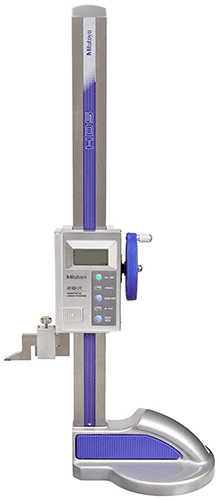
Mitutoyo 12" Digital Height Gage. About $572.65 on Amazon.
I've pictured two excellent entry-level height gages from name-brand makers-Starrett and Mitutoyo. The Mitutoyo is a lot more money, but it also has twice the full range travel and a fine adjustment handwheel. The Starrett is more of a calipers-on-a-stand.
You will also need to budget for a surface plate to make the height gage useful.
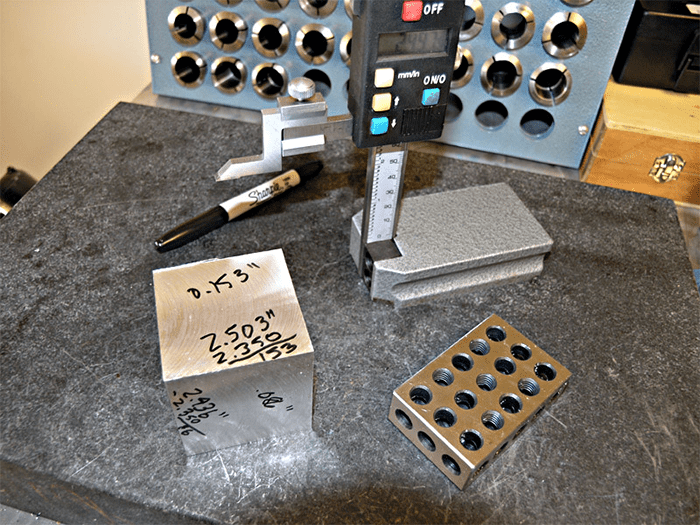
Measuring a workpiece with height gage and granite surface plate for a Turner's Cube...
The photo above shows my very first cheap height gage in use for a Turner's Cube project. I wish I'd invested in a nicer height gage, but I have to admit, I got an awful lot of mileage out of it for a number of years before buying a Mitutoyo.
Height Gage Accuracy
Typical height gages can measure vertical distances to a thousandth (0.001"). Micrometer or electronic height gages are accurate to a tenth (0.0001") or sometimes even better.
The primary weakness in accuracy for height gages is how square it is to the reference plane being measured. This manifests in two ways. First, if your surface plate is not truly flat, it makes height gages less accurate. Second, if the height gauge's arm that is used to measure vertical distances is not square to the base, the height gauge will be less accurate.
The latter (inaccuracy of the arm's squareness to the base) can happen if the height gauge is jolted hard during shipment, so it's worth checking out right after you get a new height gauge.
Height Gage Types
Just as with calipers you can get Vernier Height Gauges and Dial Height Gages. Digital Height Gauges are so nice I just don't see the point of anything else unless you happen to inherit a really nice one of the others for free. Their digital display is the best user interface available. Verniers are available in extremely tall formats, but Dial Height Gages are almost always 12" of full range travel or less.
There are a lot of different height gages available.
Dual Post Height Gauges (Dual Beam Height Gauges)
Here's a nice Starrett dual post height gauge:
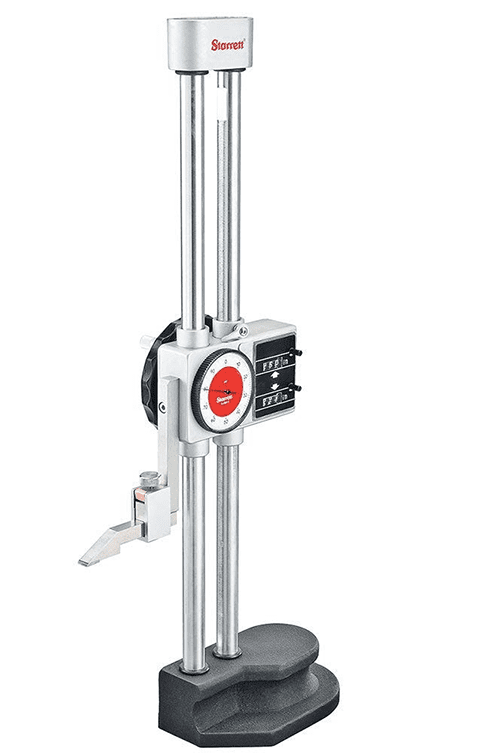
Micrometer Height Gages: Height Master, Digi Chek, Pla-Check, and Cadillac Height Gages
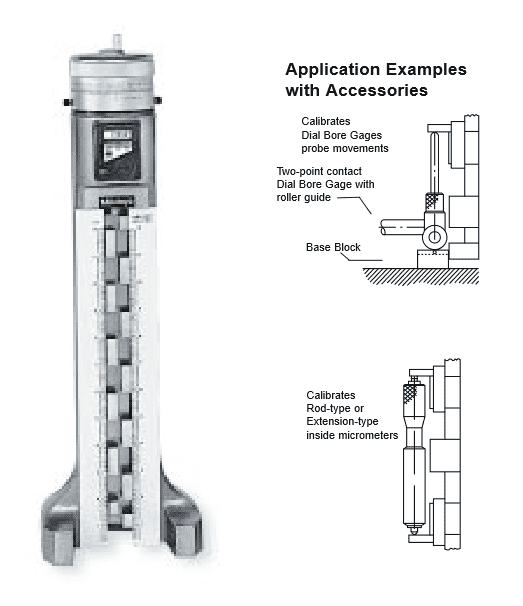
Mitutoyo Series 515 Height Master Micrometer Height Gauge...
These precision measuring devices are accurate to a tenth (0.0001") or sometimes even smaller, so you're getting Micrometer-accuracy in a height gage. Really nice!
They are essentially an integrated combination of a Micrometer Head for fine adjustment and precision gage blocks for setting the coarse range of a measurement.
But, they're largely relics of the past, having given way to Motorized and Computerized Electronic Height Gages. They still have a role to play for precision calibration, but they're cumbersome to use as pure height gauges.
These elegant mechanical devices start out under $1000 and go up to perhaps a little under $4000 depending on their age and condition. There are a variety of brands. Mitutoyo's are called "Height-Master". Starrett had the "Digi Chek Height Master". Pla-Check and Cadillac are also names associated with Micrometer Height Gauges.
Dial Height Gage
Here's a close up of a dial height gage:
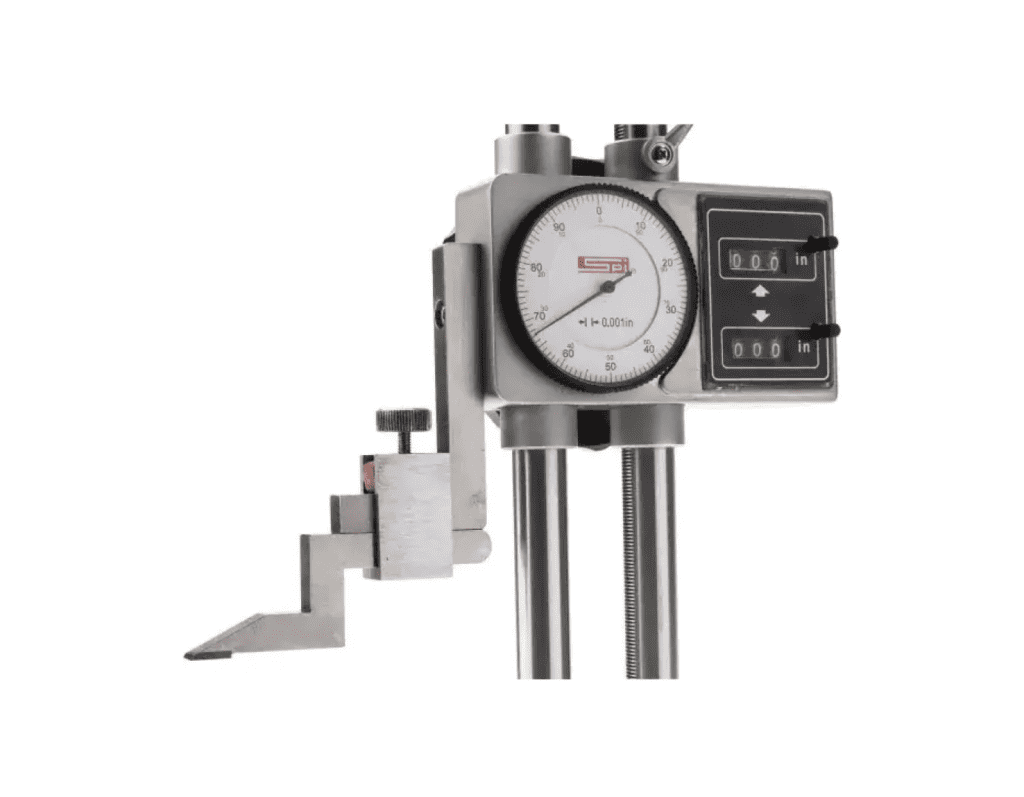
Typically, only the last few digits are picked up by the dial on these.
Electronic Height Gauges: Motorized and Computerized
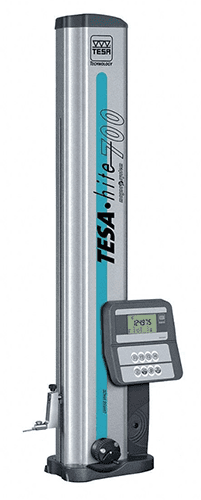
Tesa Height Magna 700 Electronic Height Gauge...
These are the ultimate in height gauges. They're just a wee bit short of being true 3D Coordinate Measurement Machines (CMM). As a result, they're expensive. Think as much as $20,000, though CMM's are more. If you're willing to buy the less expensive models, or perhaps a used model, they can be had for around $4000-$6000.
Motorizing achieves greater automation and consistency of measurement. Electronic probes are the super-sensitive equivalent of putting a DTI on a manual height gauge. And Computerization lets them do the math to take all sorts of measurements that are not obvious.
There are both 1D and 2D models, with the 2D (two dimensions measured) being more money, of course.
Here's a typical list of the measurement functions available for an Electronic Height Gage:
- Height
- ID
- OD
- Width
- Depth
- Slot
- Centerline
Here's a quick demo video of a Tesa Hite Magna 700 Electronic Height Gage:
Height Gage Accessories [Probes, Tips, and More]
There are a number of height gage accessories available.
Height Gauge Scriber
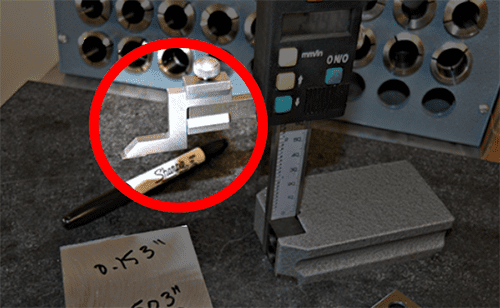
Most height gauges come with a scriber by default. It makes it easy to scribe a line, particularly in layout dye, on a part at a particular height.
Layout Fluid / Layout Die
While we're on the subject of Layout Die, here's the traditional Dykem Layout Fluid product:
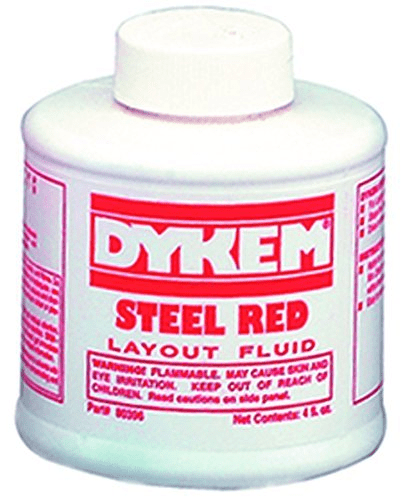
Dykem Red Layout Fluid. About $8 on Amazon...
Dykem is available in Red or Blue colors, and the cap has an integrated brush. You can also get various kinds of aerosol spray-on Layout Fluid.
The point of Layout Fluid is to create a high contrast so that lines scribed with Height Gages or other marking scribes are highly visible on the workpiece. This practice is more common for manual machining than CNC, but it has its uses even for CNC'ers.
Height Gauge with Dial Indicator
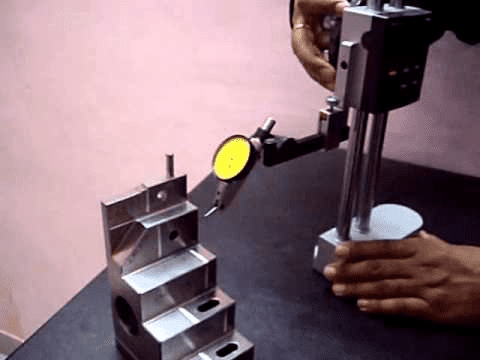
Mounting a Dial Test Indicator to your height gauge can increase accuracy on vertical distances by ensuring contact is made with the measurement surface in exactly the same way with a high degree of accuracy every time.
Height Gauge Sensor or Touch Probe
These are the electronic version of using a DTI to increase the sensitivity and consistency of readings. They work just like electronic edge finders for mills. Typically they light an LED and/or give an audio tone when the height gauge touches the surface being measured.
This article has been part of our Complete Guide to Metrology.
1/5 - (1 vote)
Be the first to know about updates at CNC Cookbook
Join our newsletter to get updates on what's next at CNC Cookbook.